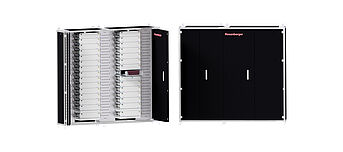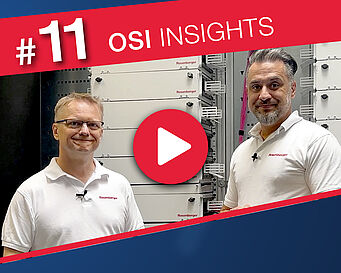As in the real estate market, every square meter is valuable in a data center. Space is the most precious resource and IT space is only available in limited quantities. The goal of every data center operator is therefore to realize as much performance as possible in as little space as possible. By optimizing the use of available space, reducing energy consumption and improving operability, companies can save costs while maintaining an efficient and powerful IT infrastructure. But what are the concrete starting points here?
- Optimization of space requirements
- Improved usability
- Reduction of energy consumption
- Better resource utilization and improved profitability
Optimizing space utilization in the data center
The energy required for cooling is one of the main drivers of data center costs. This high energy requirement also repeatedly provides a target for attack when it comes to sustainability in and of data centers. Therefore, it is extremely important to use the cooled and thus expensive space for the active components and to banish everything that does not need to be cooled from the cold aisle.
Space-saving cabling racks are the answer here, as they maximize the available space. With conventional racks, valuable space is taken up with patch panels. Space saving solutions free up this space for servers, optimizing space utilization. Data center operators can thus significantly increase the server capacity they can accommodate in limited space without compromising on performance or accessibility.
Central systems also need to be redundant, which means they require additional space. Port density should therefore be as high as possible. This can be achieved with the help of high-density concepts. This allows the space in a 19-inch rack to be utilized much better than with conventional approaches. Instead of bulky 19" cabling racks, adapted, comfortable patch location racks in compact ODF-style format come into play here.
The use of space-saving racks also allows data centers to implement security measures more efficiently. The compact design of the racks enables better control of access to the equipment. The use of lockable doors and other security devices, for example, prevents unauthorized persons from accessing or manipulating the hardware.







